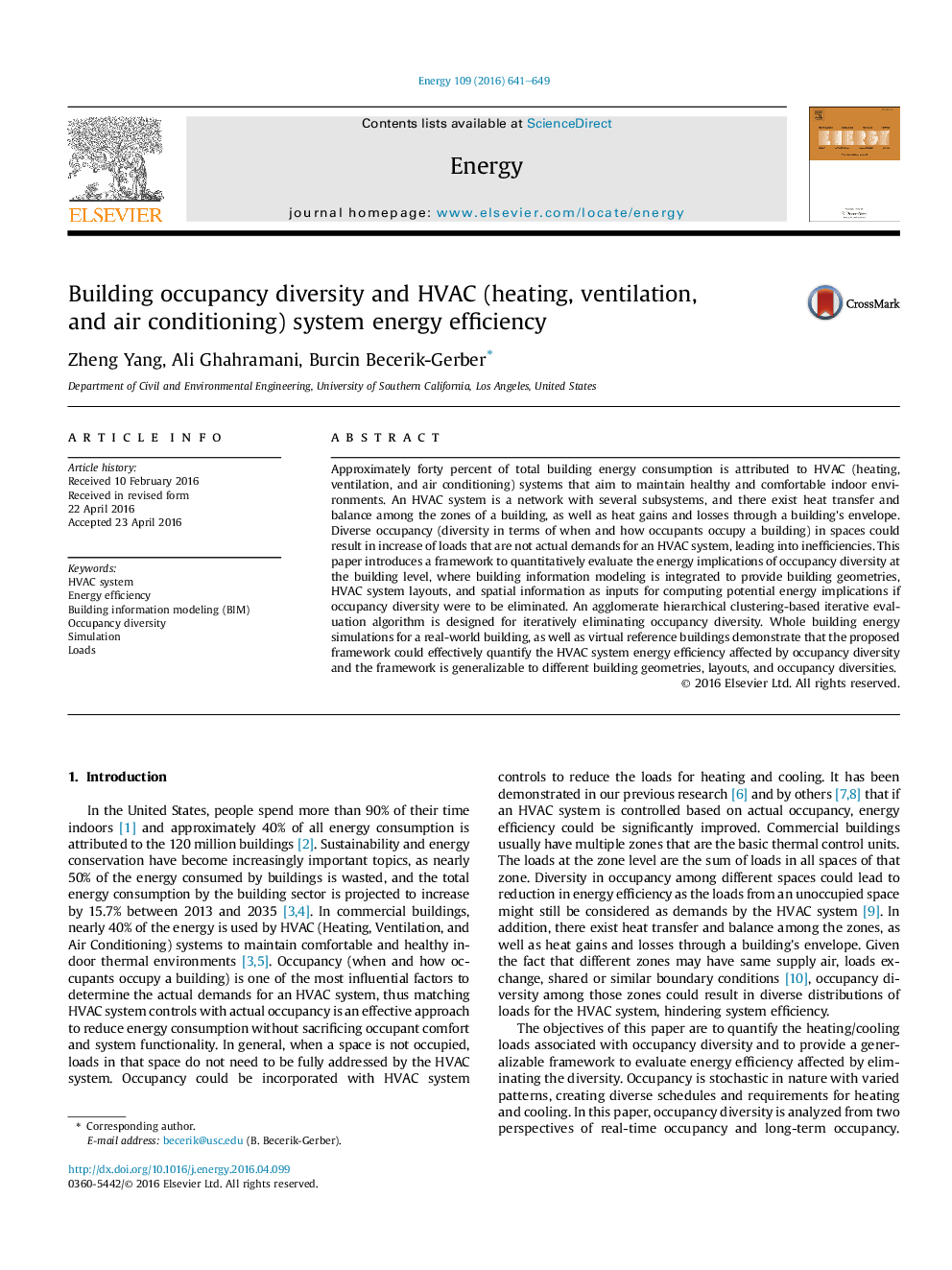| Article ID | Journal | Published Year | Pages | File Type |
|---|---|---|---|---|
| 8073574 | Energy | 2016 | 9 Pages |
Abstract
Approximately forty percent of total building energy consumption is attributed to HVAC (heating, ventilation, and air conditioning) systems that aim to maintain healthy and comfortable indoor environments. An HVAC system is a network with several subsystems, and there exist heat transfer and balance among the zones of a building, as well as heat gains and losses through a building's envelope. Diverse occupancy (diversity in terms of when and how occupants occupy a building) in spaces could result in increase of loads that are not actual demands for an HVAC system, leading into inefficiencies. This paper introduces a framework to quantitatively evaluate the energy implications of occupancy diversity at the building level, where building information modeling is integrated to provide building geometries, HVAC system layouts, and spatial information as inputs for computing potential energy implications if occupancy diversity were to be eliminated. An agglomerate hierarchical clustering-based iterative evaluation algorithm is designed for iteratively eliminating occupancy diversity. Whole building energy simulations for a real-world building, as well as virtual reference buildings demonstrate that the proposed framework could effectively quantify the HVAC system energy efficiency affected by occupancy diversity and the framework is generalizable to different building geometries, layouts, and occupancy diversities.
Related Topics
Physical Sciences and Engineering
Energy
Energy (General)
Authors
Zheng Yang, Ali Ghahramani, Burcin Becerik-Gerber,
